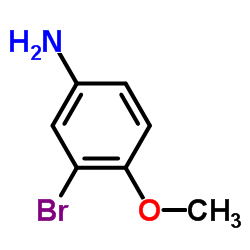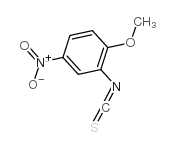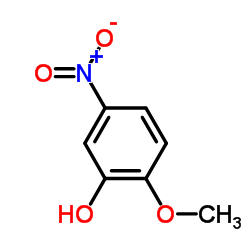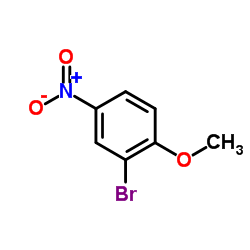99-59-2
| 中文名 | 2-氨基-4-硝基苯甲醚 |
|---|---|
| 英文名 | 2-methoxy-5-nitroaniline |
| 中文别名 |
2-氨基-4-硝基茴香醚
2-甲氧基-5-硝基苯胺 5-硝基邻甲氧基苯胺 粗色基R 大红色基R 5-硝基邻茴香胺 邻氨基对硝基苯甲醚 |
| 英文别名 |
2-Amino-4-nitro anisidine
5-Nitro-2-methoxyaniline 2-Amino-4-Nitroanisole Benzenamine, 2-methoxy-5-nitro- 2-Methoxy-5-nitrobenzenamine 3-Amino-4-methoxynitrobenzene MFCD00007261 2-Methoxy-5-nitroaniline 5-Nitro-2-anisidine EINECS 202-770-5 WNR CZ DO1 |
| 密度 | 1.3±0.1 g/cm3 |
|---|---|
| 沸点 | 351.8±22.0 °C at 760 mmHg |
| 熔点 | 117-119 °C(lit.) |
| 分子式 | C7H8N2O3 |
| 分子量 | 168.150 |
| 闪点 | 166.6±22.3 °C |
| 精确质量 | 168.053497 |
| PSA | 81.07000 |
| LogP | 1.69 |
| 外观性状 | 橙色至棕色粉末 |
| 蒸汽压 | 0.0±0.8 mmHg at 25°C |
| 折射率 | 1.601 |
| 储存条件 | 储存于阴凉、通风的库房。远离火种、热源。防止阳光直射。包装密封。应与氧化剂分开存放,切忌混储。配备相应品种和数量的消防器材。储 区应备有合适的材料收容泄漏物。 |
| 稳定性 | 避免与强氧化剂接触。 |
| 水溶解性 | Slightly soluble. |
| 分子结构 | 1、 摩尔折射率:43.71 2、 摩尔体积(cm3/mol):127.5 3、 等张比容(90.2K):345.2 4、 表面张力(dyne/cm):53.6 5、 介电常数: 6、 偶极距(10-24cm3): 7、 极化率:17.32 |
| 计算化学 | 1.疏水参数计算参考值(XlogP):无 2.氢键供体数量:1 3.氢键受体数量:4 4.可旋转化学键数量:1 5.互变异构体数量:无 6.拓扑分子极性表面积81.1 7.重原子数量:12 8.表面电荷:0 9.复杂度:169 10.同位素原子数量:0 11.确定原子立构中心数量:0 12.不确定原子立构中心数量:0 13.确定化学键立构中心数量:0 14.不确定化学键立构中心数量:0 15.共价键单元数量:1 |
| 更多 | 1. 性状:橙红色针状晶体。 2. 密度(g/mL,20℃):1.2068 3. 相对蒸汽密度(g/mL,空气=1):未确定 4. 熔点(ºC):117-119 5. 沸点(ºC,常压):未确定 6. 沸点(ºC, kPa):未确定 7. 折射率:未确定 8. 闪点(ºC):未确定 9. 比旋光度(º):未确定 10. 自燃点或引燃温度(ºC): 未确定 11. 蒸气压(mmHg,20.2ºC):未确定 12. 饱和蒸气压(kPa, ºC):未确定 13. 燃烧热(KJ/mol):未确定 14. 临界温度(ºC):未确定 15. 临界压力(KPa):未确定 16. 油水(辛醇/水)分配系数的对数值:未确定 17. 爆炸上限(%,V/V):未确定 18. 爆炸下限(%,V/V):未确定 19. 溶解性:易溶于丙酮、甲醇、乙醇、苯、乙酸乙酯等。不溶于石油醚。 |
Synonym:5-Nitro-o-anisidine; 3-Amino-4-Methoxynitrobenzene; 3-Nitro-6-Methoxyaniline Section 2 - COMPOSITION, INFORMATION ON INGREDIENTS
Risk Phrases: 26/27/28 33 Section 3 - HAZARDS IDENTIFICATION EMERGENCY OVERVIEW
Very toxic by inhalation, in contact with skin and if swallowed. Danger of cumulative effects.Moisture sensitive. Potential Health Effects Eye: Dust may cause mechanical irritation. Skin: May cause skin irritation. Ingestion: May cause irritation of the digestive tract. Inhalation: May cause respiratory tract irritation. Chronic: May cause cancer according to animal studies. Section 4 - FIRST AID MEASURES Eyes: Flush eyes with plenty of water for at least 15 minutes, occasionally lifting the upper and lower eyelids. Get medical aid immediately. Skin: Get medical aid. Flush skin with plenty of water for at least 15 minutes while removing contaminated clothing and shoes. Wash clothing before reuse. Ingestion: If victim is conscious and alert, give 2-4 cupfuls of milk or water. Never give anything by mouth to an unconscious person. Get medical aid immediately. Inhalation: Remove from exposure and move to fresh air immediately. If not breathing, give artificial respiration. If breathing is difficult, give oxygen. Get medical aid. Notes to Physician: Treat symptomatically and supportively. Antidote: None reported. Section 5 - FIRE FIGHTING MEASURES General Information: As in any fire, wear a self-contained breathing apparatus in pressure-demand, MSHA/NIOSH (approved or equivalent), and full protective gear. Combustible material; may burn but does not ignite readily. Extinguishing Media: Water or foam may cause frothing. Use foam, dry chemical, or carbon dioxide. Section 6 - ACCIDENTAL RELEASE MEASURES General Information: Use proper personal protective equipment as indicated in Section 8. Spills/Leaks: Sweep up or absorb material, then place into a suitable clean, dry, closed container for disposal. Avoid generating dusty conditions. Provide ventilation. Section 7 - HANDLING and STORAGE Handling: Wash thoroughly after handling. Use only in a well-ventilated area. Minimize dust generation and accumulation. Avoid contact with eyes, skin, and clothing. Keep container tightly closed. Avoid ingestion and inhalation. Storage: Store in a cool, dry, well-ventilated area away from incompatible substances. Keep containers tightly closed. Section 8 - EXPOSURE CONTROLS, PERSONAL PROTECTION Engineering Controls: Use adequate general or local exhaust ventilation to keep airborne concentrations below the permissible exposure limits. Exposure Limits CAS# 99-59-2: Russia: 1 mg/m3 TWA Personal Protective Equipment Eyes: Wear appropriate protective eyeglasses or chemical safety goggles as described by OSHA's eye and face protection regulations in 29 CFR 1910.133 or European Standard EN166. Skin: Wear appropriate protective gloves to prevent skin exposure. Clothing: Wear appropriate protective clothing to prevent skin exposure. Respirators: Follow the OSHA respirator regulations found in 29 CFR 1910.134 or European Standard EN 149. Use a NIOSH/MSHA or European Standard EN 149 approved respirator if exposure limits are exceeded or if irritation or other symptoms are experienced. Section 9 - PHYSICAL AND CHEMICAL PROPERTIES Physical State: Powder Color: orange to brown Odor: None reported. pH: Not available. Vapor Pressure: 1.3104 mm Hg @25C Viscosity: Not available. Boiling Point: Not available. Freezing/Melting Point: 117.0 - 119.0 deg C Autoignition Temperature: Not available. Flash Point: 200 deg C ( 392.00 deg F) Explosion Limits, lower: N/A Explosion Limits, upper: N/A Decomposition Temperature: 200 deg C Solubility in water: 2206 mg/L @25C Specific Gravity/Density: 1.207 @156C Molecular Formula: C7H8N2O3 Molecular Weight: 168.15 Section 10 - STABILITY AND REACTIVITY Chemical Stability: Stable under normal temperatures and pressures. Conditions to Avoid: Incompatible materials, dust generation, exposure to moist air or water. Incompatibilities with Other Materials: Strong oxidizing agents, acids, acid chlorides, acid anhydrides, chloroformates, liquid anisidine. Hazardous Decomposition Products: Nitrogen oxides, carbon monoxide, carbon dioxide, nitrogen. Hazardous Polymerization: Has not been reported. Section 11 - TOXICOLOGICAL INFORMATION RTECS#: CAS# 99-59-2: BZ7175000 LD50/LC50: CAS# 99-59-2: Oral, mouse: LD50 = 1060 mg/kg; Oral, rabbit: LD50 = 1 gm/kg; Oral, rat: LD50 = 2250 mg/kg. Carcinogenicity: 2-Methoxy-5-nitroaniline - California: carcinogen, initial date 10/1/89 Other: See actual entry in RTECS for complete information. Section 12 - ECOLOGICAL INFORMATION Other No information available. Section 13 - DISPOSAL CONSIDERATIONS Dispose of in a manner consistent with federal, state, and local regulations. Section 14 - TRANSPORT INFORMATION IATA Shipping Name: TOXIC SOLID, ORGANIC, N.O.S.* Hazard Class: 6.1 UN Number: 2811 Packing Group: II IMO Shipping Name: TOXIC SOLID, ORGANIC, N.O.S. Hazard Class: 6.1 UN Number: 2811 Packing Group: II RID/ADR Shipping Name: TOXIC SOLID, ORGANIC, N.O.S. Hazard Class: 6.1 UN Number: 2811 Packing group: II Section 15 - REGULATORY INFORMATION European/International Regulations European Labeling in Accordance with EC Directives Hazard Symbols: T+ Risk Phrases: R 26/27/28 Very toxic by inhalation, in contact with skin and if swallowed. R 33 Danger of cumulative effects. Safety Phrases: S 28A After contact with skin, wash immediately with plenty of water. S 36/37 Wear suitable protective clothing and gloves. S 45 In case of accident or if you feel unwell, seek medical advice immediately (show the label where possible). WGK (Water Danger/Protection) CAS# 99-59-2: No information available. Canada CAS# 99-59-2 is listed on Canada's NDSL List. CAS# 99-59-2 is listed on Canada's Ingredient Disclosure List. US FEDERAL TSCA CAS# 99-59-2 is listed on the TSCA inventory. SECTION 16 - ADDITIONAL INFORMATION N/A |
|
毒理学数据: 1、 急性毒性:大鼠经口LD5O:2250mg/kg 小鼠经口LD5O:1060mg/kg 生态学数据: 该物质对水有稍微的危害。 CHEMICAL IDENTIFICATION
HEALTH HAZARD DATAACUTE TOXICITY DATA
MUTATION DATA
|
| 符号 |

GHS07 |
|---|---|
| 信号词 | Warning |
| 危害声明 | H315-H319-H335 |
| 警示性声明 | P261-P305 + P351 + P338 |
| 个人防护装备 | dust mask type N95 (US);Eyeshields;Gloves |
| 危害码 (欧洲) | Xn:Harmful; |
| 风险声明 (欧洲) | R20/21/22 |
| 安全声明 (欧洲) | S26-S36-S45-S36/37 |
| 危险品运输编码 | NONH for all modes of transport |
| WGK德国 | 2 |
| RTECS号 | BZ7175000 |
| 包装等级 | I; II; III |
| 危险类别 | 6.1 |
| 海关编码 | 2922299090 |
| 上游产品 10 | |
|---|---|
| 下游产品 10 | |
| 海关编码 | 2922299090 |
|---|---|
| 中文概述 | 2922299090. 其他氨基(萘酚、酚)及醚、酯〔包括它们的盐, 但含有一种以上含氧基的除外〕. 增值税率:17.0%. 退税率:13.0%. 监管条件:无. 最惠国关税:6.5%. 普通关税:30.0% |
| 申报要素 | 品名, 成分含量, 用途, 乙醇胺及其盐应报明色度, 乙醇胺及其盐应报明包装 |
| Summary | 2922299090. other amino-naphthols and other amino-phenols, other than those containing more than one kind of oxygen function, their ethers and esters; salts thereof. VAT:17.0%. Tax rebate rate:13.0%. . MFN tariff:6.5%. General tariff:30.0% |


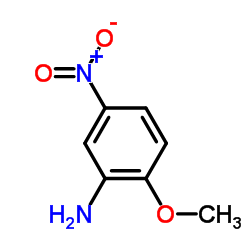
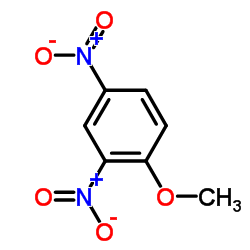



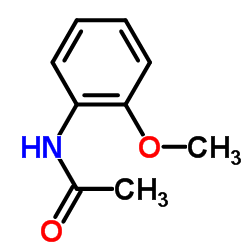

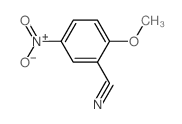
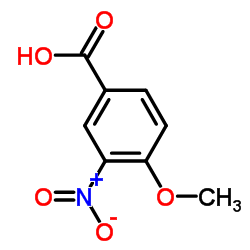



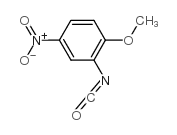


![N-[2-[(2-Bromo-4,6-dinitrophenyl)azo]-5-[(2-hydroxyethyl)amino]-4-methoxyphenyl]acetamide结构式](https://image.chemsrc.com/caspic/330/26021-21-6.png)
